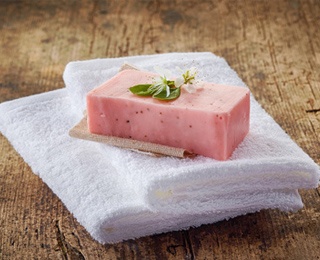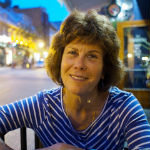Published: July 13, 2016
 Sun, wind and water.
Sun, wind and water.
Sweat and smoke.
Dust and dirt.
Bugs and plants.
Lotions and make-up.
These are just a sampling of the many external elements that have touched and thrashed your skin over the years. What you eat and drink, which medications you take and how you handle stress also affect your skin.
Skin care for older adults has additional challenges. Not only has your skin been exposed to the elements longer, but also skin changes with age, according to the National Institute on Aging.
“It becomes thinner, loses fat, and no longer looks as plump and smooth as it once did. Your veins and bones can be seen more easily. Scratches, cuts, or bumps can take longer to heal. Years of sun tanning or being out in the sunlight for a long time may lead to wrinkles, dryness, age spots, and even cancer,” the National Institute explains.
Follow these skin care tips to help your skin age in a healthy style.
Here Comes the Sun
The sun rules the solar system, and in many ways is key to skin care. Sun exposure can cause skin cancer, the most common form of all cancers in the United States with rates of new melanoma cases tripling in the last 35 years.
According to the Centers for Disease Control and Prevention, risk factors for melanoma include family history, the number of moles on a person’s skin, fair skin, and freckles. Three other risk factors - indoor tanning, ultraviolet radiation and severe sunburns – can be prevented or controlled.
“Fewer than one in three adults report using sunscreen frequently. According to a national surveys conducted by the federal Centers for Disease Control and Prevention, even fewer say they routinely seek shade, wear a hat or cover up with long sleeves,” according to Environmental Working Group’s Sun Safety Campaign.
Let’s start with sunscreen. The selection is overwhelming and confusing, with so many products offering a range of SPF ratings, ingredients and applications on the shelf. The Environmental Working Group (EWG) has compiled a sunscreen guide, and here are key findings from its research:
- Don’t be fooled by high SPF, as it may tempt you to apply too little sunscreen and stay in the sun longer. The FDA recommends a SPF no higher than 50
- Vitamin A, a common sunscreen additive, may speed development of skin cancer
- Remember sunscreen is not a cure-all
“Sunscreen should be just one tool in your arsenal,” EWG advises.
Other tools include wide-brimmed hats, shirts, long pants, sunglasses and other cover-ups, spending time in shady spots like under trees and umbrellas, avoiding the sun during 10 a.m. to 2 p.m. when its rays are generally the strongest and staying clear of tanning beds.
Other TLC Tips
Smoking, a culprit of so many ills, is also bad for your skin. Research has found that smoking accelerates the aging of skin. So instead of placing a cigarette between your lips, put a glass of water between them. Water helps hydrate skin from the inside out.
Dry skin is a problem for people of all ages, especially during the winter months. But older people tend to have more trouble due to the natural changes in skin that occur with age. Extensive dry skin can lead to more serious problems, such as dermatitis and eczema.
The Cleveland Clinic recommends the following to prevent and treat dry skin:
- Take lukewarm baths or showers;
- Limit baths/showers to 5 to 10 minutes;
- Apply a moisturizer right after drying off from a shower or washing your hands;
- Use a moisturizing body soap and hand soap;
- Use heavier creams or ointments during the winter months and lighter lotions in the summer.
It may surprise you to learn that a daily scrubbing shower or bath may be overdoing it, especially in the cold winter months. Geriatric Nurse Practitioner Jennifer Serafin recommends the following:
- Daily cleansing should include the face, peri area (groin), under the breasts, under skin folds, and the arm pits.
- Frequent bathing can cause dry skin, itchy skin and irritation.
- Use gentle soaps.
- Lotions can be helpful after bathing to prevent dry skin.
 In the past, Molly Kavanaugh frequently wrote about Kendal at Oberlin for the Cleveland Plain Dealer, where she was a reporter for 16 years. Now we are happy to have her writing for the Kendal at Oberlin Community.
In the past, Molly Kavanaugh frequently wrote about Kendal at Oberlin for the Cleveland Plain Dealer, where she was a reporter for 16 years. Now we are happy to have her writing for the Kendal at Oberlin Community.





